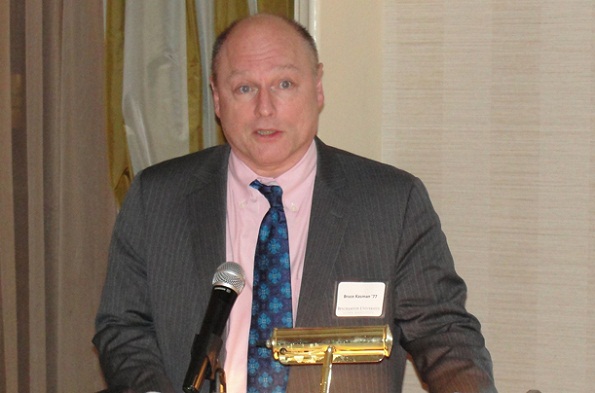
WASHINGTON | 2012 looks particularly uncertain for the world’s largest economy, as chief economist at the U.S. bank JP Morgan Bruce Kasman admits to us. In theory the labor market is doing well. The unemployment rate fell from 9% to 8.6% in November, when the U.S. labor market created 120,000 jobs.
But given the population growth, for the unemployment to fall it would have been necessary to generate 150,000 new jobs. How is this discrepancy possible?
“The numbers reflect both higher job creation, with a modest growth in labor supply in the service sector, as well as a decline in the workforce. I believe that each of these factors accounts for 50% of the decrease in unemployment,” said Kasman.
In financial terms, and theoretically, U.S. banks are in a position that European banks would want for themselves. In addition, the new stress tests of the Federal Reserve are much tougher than any similar tests the EBA might have imagined implementing. But then, how is it possible that Morgan Stanley’s (the second largest U.S. investment bank) debt non-payment insurance is higher than those of any French bank?
The explanation is due
“largely to the market’s perception of the different degree of commitment of the governments of the U.S. and France in supporting financial institutions,” said a senior official of one of the U.S. ‘big four’ banks who prefers to remain anonymous.
And it isn’t the only U.S. institution with problems. There are rumors that the second-largest U.S. bank, Bank of America, could be ‘broken up into pieces’ and sold by order of the regulators in 2012.
QE3 or not? According to Kasman,
“the U.S. economy will grow above its trend in 2012” so there is no need for more monetary policy quantitative measures… unless proven otherwise. “The Fed is very focused in its mandate, which includes the achievement of full employment, and if it finds that it cannot attain its objective, it will take exceptional measures.” That is, a third round of QE. Kasman estimates that U.S. prices “will be below 1% in 2012,”
which will leave plenty of spare room for an eventual QE. But the M1 is growing at a rate of 40%,
“largely due to inflow from fleeing European capital and that, sooner or later, will have inflationary implications”, explains Jay Akasia, director of Institutional Investors, in a telephone conversation.
THE DELAYED ADJUSTMENT
The Fed accepts that
“the FDIC has changed the methodology for estimating banks’ deposits so that it includes accounts that are abroad. This has caused the entities to repatriate funds that they had in Bermuda, Barbados and other tax havens. At the same time, money funds are not lending money (especially to European banks) due to the market volatility so they keep it in overnight deposits,” sources at the issuing institution explained.
It is not clear, therefore, whether there will be inflation but it’s sure that there is more money circulating.
And then there are political risks (quite obvious in December when the U.S. was embroiled in a surreal debate with Republicans, who required as a condition for extending the subsidy to the long-term unemployed the ‘green light’ for the construction of an oil pipeline from Canada). And the time bombs: in twelve months time,
“a new rise in the debt ceiling will have to be debated, and on top of it, due to the failure of the ‘Super-committee’ for the reduction of the deficit, there will be cuts in the automatic spending by $100bn for the year 2013”, says the chief economist at JP Morgan.
For Kasman, “there is tremendous uncertainty about what will happen in 2013. Just after the elections, we will reopen the debate on cutting Social Security contributions, the renewal of the expansion of the unemployment subsidy, and also, the expiration of the Bush tax cuts. If this occurs, there will be a tremendous fiscal adjustment.”





Be the first to comment on "JP Morgan’s Bruce Kasman: “a tremendous fiscal adjustment” in the horizon for the US"